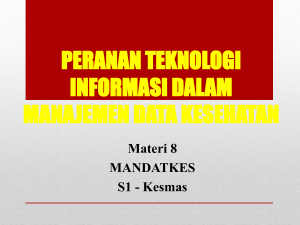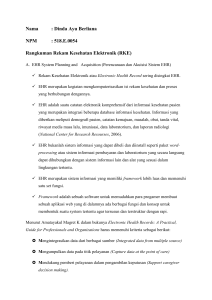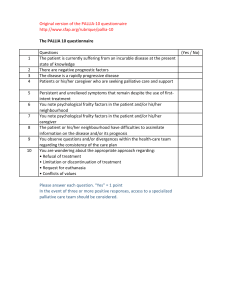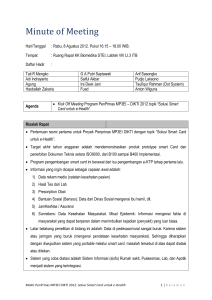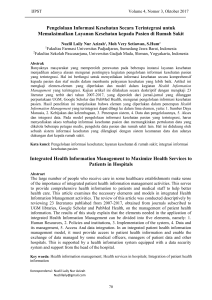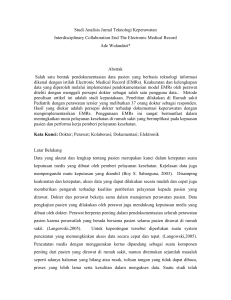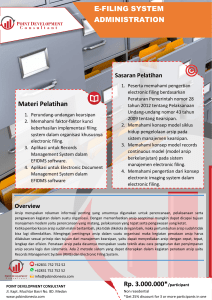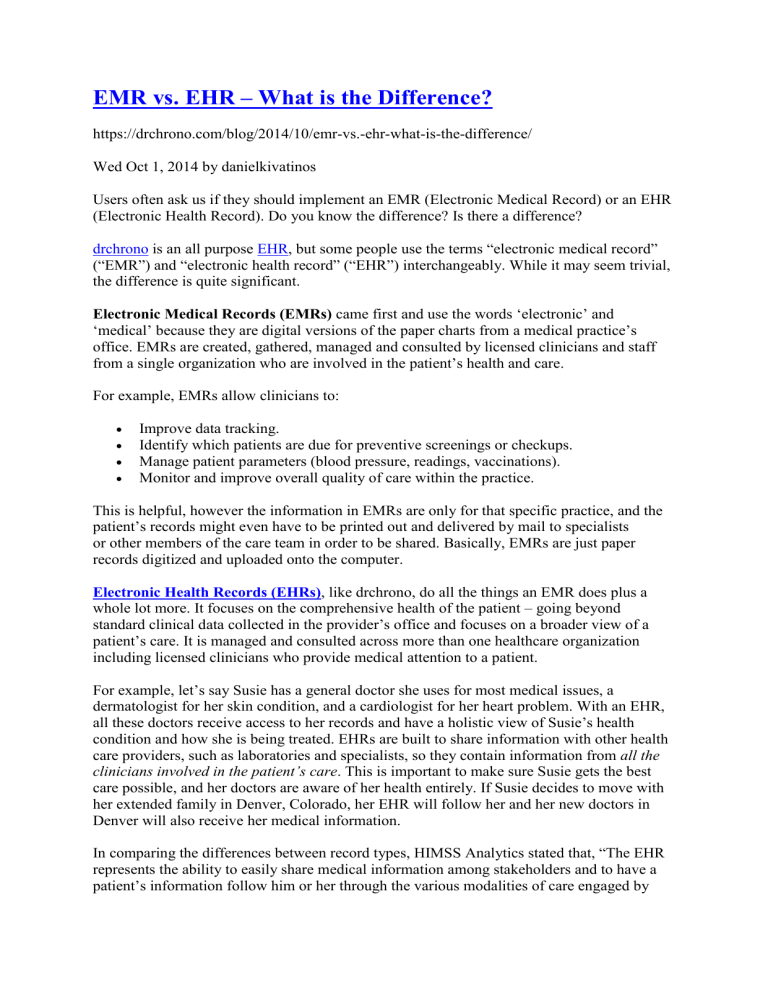
EMR vs. EHR – What is the Difference? https://drchrono.com/blog/2014/10/emr-vs.-ehr-what-is-the-difference/ Wed Oct 1, 2014 by danielkivatinos Users often ask us if they should implement an EMR (Electronic Medical Record) or an EHR (Electronic Health Record). Do you know the difference? Is there a difference? drchrono is an all purpose EHR, but some people use the terms “electronic medical record” (“EMR”) and “electronic health record” (“EHR”) interchangeably. While it may seem trivial, the difference is quite significant. Electronic Medical Records (EMRs) came first and use the words ‘electronic’ and ‘medical’ because they are digital versions of the paper charts from a medical practice’s office. EMRs are created, gathered, managed and consulted by licensed clinicians and staff from a single organization who are involved in the patient’s health and care. For example, EMRs allow clinicians to: Improve data tracking. Identify which patients are due for preventive screenings or checkups. Manage patient parameters (blood pressure, readings, vaccinations). Monitor and improve overall quality of care within the practice. This is helpful, however the information in EMRs are only for that specific practice, and the patient’s records might even have to be printed out and delivered by mail to specialists or other members of the care team in order to be shared. Basically, EMRs are just paper records digitized and uploaded onto the computer. Electronic Health Records (EHRs), like drchrono, do all the things an EMR does plus a whole lot more. It focuses on the comprehensive health of the patient – going beyond standard clinical data collected in the provider’s office and focuses on a broader view of a patient’s care. It is managed and consulted across more than one healthcare organization including licensed clinicians who provide medical attention to a patient. For example, let’s say Susie has a general doctor she uses for most medical issues, a dermatologist for her skin condition, and a cardiologist for her heart problem. With an EHR, all these doctors receive access to her records and have a holistic view of Susie’s health condition and how she is being treated. EHRs are built to share information with other health care providers, such as laboratories and specialists, so they contain information from all the clinicians involved in the patient’s care. This is important to make sure Susie gets the best care possible, and her doctors are aware of her health entirely. If Susie decides to move with her extended family in Denver, Colorado, her EHR will follow her and her new doctors in Denver will also receive her medical information. In comparing the differences between record types, HIMSS Analytics stated that, “The EHR represents the ability to easily share medical information among stakeholders and to have a patient’s information follow him or her through the various modalities of care engaged by that individual.” EHRs are designed to be accessed by all people involved in the patients care—including the patients themselves. With EHRs (like drchrono): The data gathered by the primary care provider provides the emergency department clinician about the patient’s allergy, so that care can be adjusted appropriately. Recently run lab results are already in the record to tell the specialist what she or he needs to know without running duplicate tests. Clinician’s notes from the patient’s hospital stay can aid follow-up care and enable the patient to move from one care setting to another more smoothly. The ability for everyone involved in a patient’s care – including the patient – to have access to crucial information delivers a higher standard of care. In addition, Meaningful Use incentives have popularized EHRs in medical practices. Programs like the Medicare and Medicaid EHR Incentive Program will provide EHR incentive** **payments to eligible professionals (EPs) and eligible hospitals as they adopt, implement, upgrade, or demonstrate Meaningful Use of certified electronic health record (EHR) technology. drchrono is Meaningful Use 1 and 2 Certified. So, the difference between “electronic medical records” and “electronic health records” is just one word, but that one word makes a great difference. Electronic Medical Records (EMRs) menggunakan kata "Medical" dan "Elektronik" karena ia adalah bentuk digital dari laporan mengenai status pasien dari praktik dokter. EMR di buat, dikumpulkan, dikelola dan dikonsultasikan oleh petugas teruji klinik dan staff dari sebuah organisasi yang terlibat dalam pelayanan pasien. Sebagai contoh, EMR memungkinkan petugas klinik untuk: -Meningkatkan pelacakan data -Mengidentifikasikan pasien mana yang pantas didahulukan untuk checkup dan screening. -Mengelola parameter pasien (tekanan darah, status, vaksinasi) -Memonitor dan meningkatkan kualitas total dari pelayanan kesehatan dalam klinik yang bersangkutan. Informasi ini sangat berguna, namun informasi ini hanya dapat diakses di dalam klinik itu saja, dan informasi ini bahkan harus di print atau di emailkan untuk spesialis lain atau organisasi lainnya jika pasien memutuhkan informasi tersebut untuk menjalani pelayanan kesehatan. Pada dasarnya, EMR hanyalah laporan kertas yang digitalisasi dan diupload ke komputer. Electronik Health Records (EHRs) https://blog.assist.id/rekam-kesehatan-elektronik-dan-rekam-medis-elektronik-bedanya-apaya/ EHR pada dasarnya sama dengan EMR hanya saja lebih luas. EHR fokus ke pemahaman kesehatan lebih luas dari pasien-melampaui standar data klinis yang dikoleksi di klinik awal dan fokus ke tampilan lebih luas dari pelayanan kesehatan pasien. Misalnya saja, Susi berobat ke dokter umum bila terkena penyakit umum, dokter spesialis kulit untuk penyakit kulit, dan dokter spesialis jantung dan pembuluh darah untuk permasalahan jantungnya. Dengan EHR semua dokter yang menangani kesehatan Susi bisa mengakses semua informasi rekam medis Susi dan bisa memiliki pandangan lebih luas mengenai kesehatannya, tidak terbatas oleh bidangnya saja, juga perawatan yang diterima oleh Susi. EHR dibangun untuk membagikan informasi dengan penyedia layanan kesehatan lainnya, seperti laboratorium dan dokter spesialis, jadi EHR mengandung informasi dari semua petugas klinik yang terlibat dalam pelayanan kesehatan pasien. Hal ini sangat penting untuk memastikan Susi menerima perawatan terbaik, dan dokter-dokternya bisa mengamati kesehatannya secara keseluruhan. Jika Susi berpindah kota, EHR akan tetap mengikutinya dan dokter barunya disana juga akan bisa mengakses rekam medisnya. Dibandingkan dengan tipe rekam medis lainnya, seperti yang diutarakan HIMSS Analytics "EHR merepresentasikan kemampuan untuk dengan mudah membagi informasi medis diantara mereka yang terlibat dan memiliki informasi pasien yang dapat terus mengikuti mereka melalui perawatan yang telah dilaksanakan oleh orang tersebut." EHR didesain untuk bisa diakses bagi semua orang yang terlibat di dalam perawatan pasien-termasuk pasien itu sendiri. Dengan EHR : -Data dikumpulkan oleh penyedia kesehatan utama menyediakan departemen gawat darurat klini informasi mengenai alergi pasien , jadi perawatan bisa diatur secara intensif. -Hasil tes laboratorium sudah tertera di laporan untuk spesialis apa yang wajib mereka ketahui tanpa harus menjalankan tes tambahan. -Catatan klinik dari pasien rawat inap dapat dipindahkan dengan mudah dari satu instansi ke instansi lain dengan sangat lancar. Kemampuan dari semua orang yang terlibat dalam perawatan pasien-termasuk pasien itu sendiri-untuk bisa memiliki akses ke informasi penting, memerlukan standar yang tinggi.
